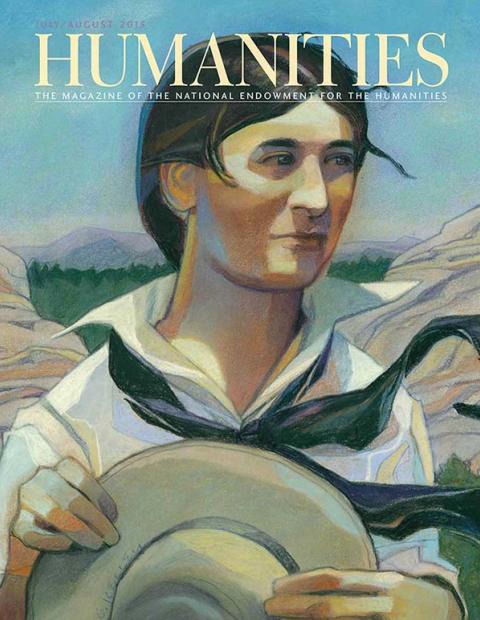Willa Cather has been the subject of some controversy in recent years. No one with passing knowledge of intellectual fashion will be surprised that it involves her romantic persuasion, and yet other, arguably deeper, questions remain.
As Joan Acocella of the New Yorker noted, for all the light shed by the 2013 publication of Cather’s selected letters, they did not answer how she became a great artist. (Among other Cather-related commitments, NEH has given a large grant to support the online publication of her complete letters.)
Cather’s novels, however, contain many artists and thinkers seeking their true purpose. A century ago this year, Cather published The Song of the Lark, a portrait of Thea Kronborg, a Swedish girl from small-town Colorado who grows into a great opera singer. As it happens, the turning point for Thea was not unlike a major biographical turning point for Cather: a trip into the southwestern desert. Critic Mark Athitakis takes us there.
Chicagoan Studs Terkel was a different kind of writer. More of a talker, per se, and a listener, of course. His vast radio archive is being made available online with support from NEH, while his shelf of oral history books continues to inspire imitators. Peter Tonguette investigates the life and work of this American original.
In the mountains of Appalachia, writer William H. Funk takes us to Berea College, which was founded by abolitionists to educate poor students for free. But don’t picture a workshop of softy professors trying to draw a smiley face on the problem of rural poverty. Picture a modern campus with a no-nonsense faculty and an old-fashioned administration that knows it’s making a difference.
What difference did American Indians make to the War of Independence?, Bancroft prize-winning author Woody Holton asks. A very big difference, comes the answer. Starting with the French and Indian War, a shifting tangle of alliances and tensions led directly to the Stamp Act and other sources of grievance that gave rise to the events of 1776.
Every issue of Humanities is colorful, but this one especially. Kyle G. Volk writes about the history of blue laws in America, which not only made it harder to buy alcohol on Sundays but helped inspire the literature-and-lawsuit style of minority-rights activism that remains so familiar today. And Peter BG Shoemaker visits a major exhibition on the color red as it was harvested by conquistadors in Central America. It started with the cochineal bug and soon the whole world was blushing.
You must also read Danny Heitman on the life and writings of Robert Louis Stevenson, whose emaciated appearance belied a great imagination. Stevenson wrote Treasure Island, The Strange Case of Dr. Jekyll and Mr. Hyde, and even his own epitaph.

